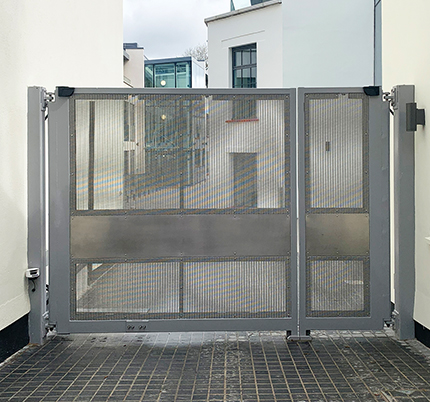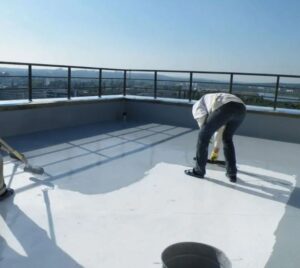
The Process of Gate Manufacturing: From Initial Design Consultation to Installation
Initial Design Consultation
Understanding Client Needs
The journey begins with the initial design consultation, a critical step where the gate manufacturer meets with the client to understand their specific needs and preferences. During this phase, the manufacturer gathers essential information, including the purpose of the gate (e.g., residential, commercial, industrial), desired materials, budget, and any specific design elements the client envisions.
Site Assessment
A site assessment is typically conducted to evaluate the installation location. This assessment helps the manufacturer understand the terrain, measure dimensions, and identify any potential obstacles that could impact the gate’s design or installation. The site assessment ensures that the gate will fit perfectly and operate smoothly within the given space.
Conceptual Design and Feedback
Based on the gathered information, the manufacturer creates a conceptual design. This design is presented to the client for feedback. The client can request modifications to the design to ensure it aligns with their vision. This iterative process continues until the client is satisfied with the proposed design.
Detailed Design and Planning
Engineering and Technical Specifications
Once the conceptual design is approved, the gate manufacturer moves to the detailed design phase. This involves creating precise engineering drawings and technical specifications. The design team considers various factors such as structural integrity, material selection, and compliance with local regulations and standards.
Integration of Security Systems
For clients requiring enhanced security, the integration of security systems is a crucial aspect of the design process. Security gate manufacturers collaborate with security system supplier to incorporate features such as access control systems, surveillance cameras, intercom systems, and automatic gate operators. These components are seamlessly integrated into the gate design to ensure maximum security and functionality.
Material Selection
Choosing the right materials is vital for the gate’s durability and aesthetics. Common materials used in gate manufacturing include steel, aluminum, wrought iron, and wood. The material selection depends on factors such as the client’s preferences, budget, and the gate’s intended use. Security gate manufacturers often recommend materials that provide the best balance between strength and visual appeal.
Fabrication and Manufacturing
Cutting and Shaping
With the design finalized and the materials selected, the fabrication process begins. The raw materials are cut and shaped according to the engineering drawings. Advanced machinery and tools are used to ensure precision and accuracy in every cut. For instance, CNC machines can create intricate designs and patterns, adding a touch of artistry to the gate.
Welding and Assembly
The cut and shaped components are then welded and assembled. Skilled welders ensure that the joints are strong and durable. The assembly process includes attaching hinges, brackets, and other hardware necessary for the gate’s operation. This stage requires meticulous attention to detail to ensure that the gate is structurally sound and ready for installation.
Surface Treatment
To enhance the gate’s longevity and appearance, surface treatment is applied. This may include sandblasting, priming, and painting or powder coating. The surface treatment protects the gate from rust, corrosion, and other environmental factors, ensuring that it remains in excellent condition for years to come.
Quality Control and Testing
Inspections and Tests
Before the gate is delivered to the client, it undergoes rigorous quality control inspections and tests. These inspections verify that the gate meets all design specifications and quality standards. Tests may include checking the alignment of components, verifying the functionality of security systems, and ensuring the smooth operation of moving parts.
Adjustments and Corrections
If any issues are identified during the inspections, adjustments and corrections are made. The goal is to ensure that the gate is perfect in every aspect before it leaves the manufacturing facility. Quality control is a critical step in maintaining the manufacturer’s reputation and ensuring client satisfaction.
Delivery and Installation
Logistics and Transportation
Once the gate has passed all quality control checks, it is carefully packaged and transported to the installation site. Logistics planning ensures that the gate arrives safely and on time. Proper handling during transportation is essential to prevent any damage to the gate.
Site Preparation
Before the installation begins, the site is prepared to receive the gate. This may involve clearing the area, digging post holes, and installing foundation components such as concrete footings. Proper site preparation ensures that the gate will be securely anchored and aligned.
Gate Installation
The installation process involves several steps:
-
Positioning: The gate is positioned according to the site assessment and design specifications.
-
Mounting: Hinges, brackets, and other hardware are mounted to secure the gate in place.
-
Electrical Connections: For automated gates, electrical connections are made to power the gate operators and security systems.
-
Testing and Adjustments: The gate is tested to ensure that it opens and closes smoothly, and any necessary adjustments are made.
Final Inspection and Handover
After the installation is complete, a final inspection is conducted. This inspection verifies that the gate operates correctly and meets all safety and security requirements. The manufacturer provides the client with an overview of the gate’s features and instructions on how to use and maintain it. The handover marks the completion of the project and the beginning of the gate’s service life.
Post-Installation Support
Maintenance Services
To ensure the longevity and optimal performance of the gate, manufacturers often offer maintenance services. Regular maintenance checks include lubricating moving parts, inspecting electrical components, and verifying the functionality of security systems. Scheduled maintenance helps prevent issues and extends the gate’s lifespan.
Repairs and Upgrades
In case of any damage or malfunction, the manufacturer provides repair services. Additionally, clients may request upgrades to enhance the gate’s security features or aesthetic appeal. Security gate manufacturers stay updated with the latest technologies and trends to offer clients the best possible solutions.
Customer Support
Excellent customer support is a hallmark of reputable gate manufacturers. Clients can reach out for assistance with any issues or questions they may have. Prompt and effective customer support ensures client satisfaction and fosters long-term relationships.
Conclusion
The process of manufacturing and installing a gate is a comprehensive journey that involves multiple stages, from the initial design consultation to the final installation. Gate manufacturers, security system suppliers, and security gate manufacturers collaborate to create gates that are not only functional and secure but also visually appealing. By following a meticulous process, these professionals ensure that each gate meets the highest standards of quality and performance. Whether for residential, commercial, or industrial purposes, a well-designed and expertly installed gate provides security, convenience, and peace of mind.


